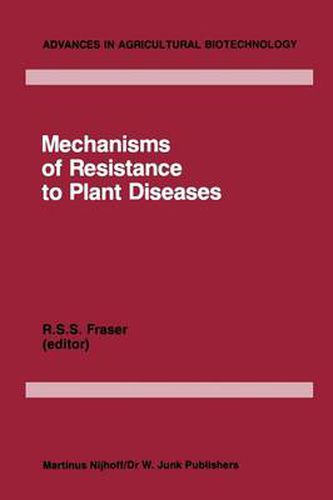Readings Newsletter
Become a Readings Member to make your shopping experience even easier.
Sign in or sign up for free!
You’re not far away from qualifying for FREE standard shipping within Australia
You’ve qualified for FREE standard shipping within Australia
The cart is loading…






This title is printed to order. This book may have been self-published. If so, we cannot guarantee the quality of the content. In the main most books will have gone through the editing process however some may not. We therefore suggest that you be aware of this before ordering this book. If in doubt check either the author or publisher’s details as we are unable to accept any returns unless they are faulty. Please contact us if you have any questions.
Plant resistance to pathogens is one of the most important strategies of disease control. Knowledge of resistance mechanisms, and of how to exploit them, has made a significant contribution to agricultural productivity. However, the continuous evolution of new variants of pathogen, ana additional control problems posed by new crops and agricultural methods, creates a need for a corresponding increase in our understanding of resistance and ability to utilize it. The study of resistance mechanisms also has attractions from a purely academic point of view. First there is the breadth of the problem, which can be approached at the genetical, molecular, cellular, whole plant or population lev~ls. Often there is the possibility of productive exchange of ideas between different disciplines. Then there is the fact that despite recent advances, many of the mechanisms involved have still to be fully elucidated. Finally, and compared with workers in other areas of biology, the student of resistance is twice blessed in having as his subject the interaction of two or more organisms, with the intriguing problems of recognition, specificity and co-evolution which this raises.
$9.00 standard shipping within Australia
FREE standard shipping within Australia for orders over $100.00
Express & International shipping calculated at checkout
This title is printed to order. This book may have been self-published. If so, we cannot guarantee the quality of the content. In the main most books will have gone through the editing process however some may not. We therefore suggest that you be aware of this before ordering this book. If in doubt check either the author or publisher’s details as we are unable to accept any returns unless they are faulty. Please contact us if you have any questions.
Plant resistance to pathogens is one of the most important strategies of disease control. Knowledge of resistance mechanisms, and of how to exploit them, has made a significant contribution to agricultural productivity. However, the continuous evolution of new variants of pathogen, ana additional control problems posed by new crops and agricultural methods, creates a need for a corresponding increase in our understanding of resistance and ability to utilize it. The study of resistance mechanisms also has attractions from a purely academic point of view. First there is the breadth of the problem, which can be approached at the genetical, molecular, cellular, whole plant or population lev~ls. Often there is the possibility of productive exchange of ideas between different disciplines. Then there is the fact that despite recent advances, many of the mechanisms involved have still to be fully elucidated. Finally, and compared with workers in other areas of biology, the student of resistance is twice blessed in having as his subject the interaction of two or more organisms, with the intriguing problems of recognition, specificity and co-evolution which this raises.